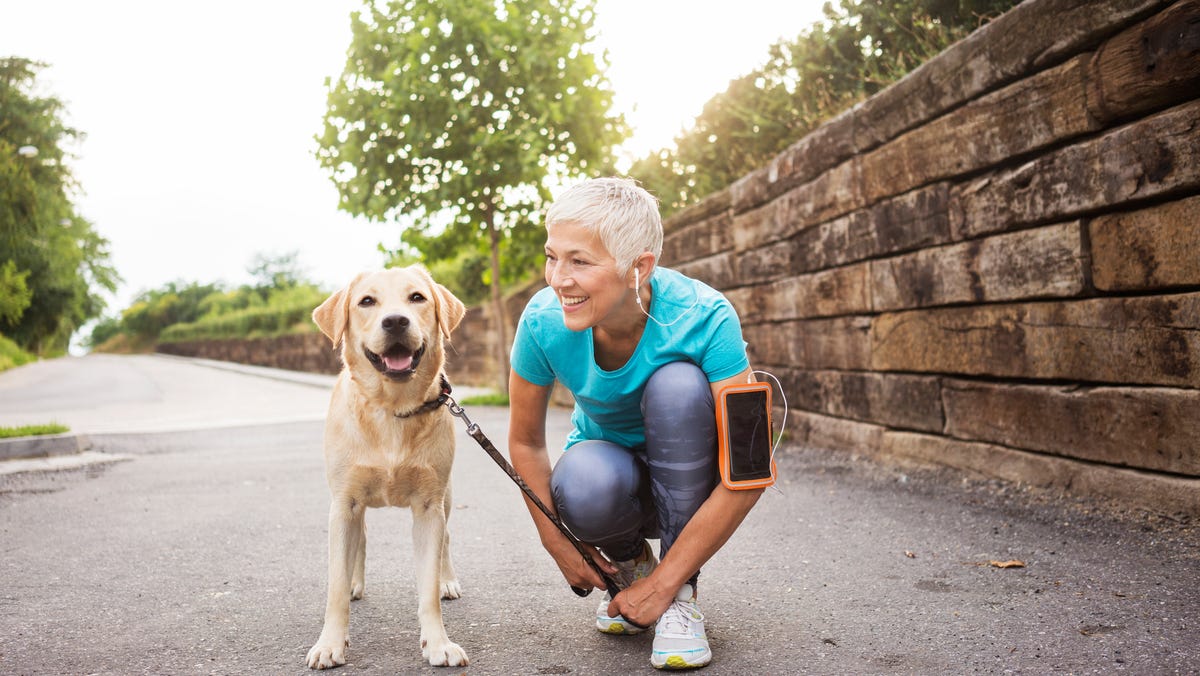Workout: You can still lift heavy weights — even while at home
The key to getting in a good weightlifting exercise these days? Improvise. Bodybuilders are utilizing household items to get their workouts in.
Though bodybuilders and runners usually take different approaches towards physical fitness, each gets something positive out of their efforts. “The most important exercise for each person is the exercise they’re willing to do,” says Austin “Ozzie” Gontang, a licensed psychotherapist at Pacific Pearl of La Jolla and the director of the San Diego Marathon Clinic.
At the same time, certain exercises really do yield more measurable results than others, and if burning calories is your primary objective, the experts say you’ll want to include these workouts as a regular part of your exercise routine.
Why do some exercises burn more calories than others?
The first thing to understand is that various exercises burn more calories than others. “The key to maximizing calorie burn is to choose exercises that engage multiple muscle groups and can be performed at a high intensity,” Gontang says. He explains that the number of calories burned from exercise is influenced by how many and which types of muscle are engaged and the intensity and duration of each activity. “High-intensity, full-body workouts generally lead to a higher calorie burn,” he says.
But it’s not as straightforward as the type of exercise alone affecting the number of calories burned. David Herzberg, a physical therapist and owner of Launch Physical Therapy and Sports Performance Center in Phoenix, explains that age and gender can also impact how many calories are burned during each activity and that overall weight and body composition make a big difference as well.
“The bigger and/or heavier you are directly affects how much caloric output you need in order to move and perform the task at hand,” he says. If you’re larger, “your body has to work harder and exerts more energy to move more weight” and you’ll burn more calories as a result. What’s more, because muscle is a more metabolically active tissue than fat, a person with higher muscle mass will usually burn more calories than someone without a lot of muscle – regardless of the exercise one engages in.
What exercise burns the most calories?
In general though, we have an idea on how many calories are burned by people of specific weights. The Centers for Disease Control and Prevention breaks down various exercises within “moderate” and “vigorous” categories, each showing how many calories are burned per activity.
- Within the “moderate physical activity” category, a 154-pound person burns 180 calories an hour stretching, 220 calories an hour leisurely weightlifting, 290 calories an hour leisurely bicycling, 330 calories an hour dancing, 330 calories an hour golfing (when carrying one’s own clubs and walking instead of using a golf cart), and 370 calories an hour hiking.
- Within the “vigorous physical activity” category, a 154-pound person burns 440 calories an hour playing basketball, 440 calories an hour weightlifting (“with vigorous effort”), 460 calories an hour walking briskly, 510 calories an hour swimming, 590 calories an hour bicycling at 10 mph or greater, and 590 calories an hour running.
“If your primary goal is burning more calories, running is usually the most effective form of exercise since it increases your heart rate quickly and utilizes many different muscles groups,” says Herzberg. He explains that an average runner burns about 12 calories per minute. “Also, depending on the intensity of how you run, various things can increase your caloric output – meaning if you increase your pace, increase your distance or even challenge your terrain such as running hills, you’ll burn more calories,” he says.
Can you burn calories if you are immobile or out of shape?
But what about bodies with limited mobility or people who aren’t in good enough shape to take on vigorous physical activities like running? Gontang recommends that such individuals “start small” and should choose activities they can reasonable perform. “For individuals who are out of shape or unable to perform endurance exercises, there are several alternative exercises that can effectively burn calories while still being low-impact and easier to start with,” he says.
For such people, he suggests walking, water aerobics, swimming, cycling or stationary biking, using an elliptical trainer and Pilates as good options. “For those with mobility issues, chair exercises that can be done while seated and still provide benefits,” he says. Seated marching, leg lifts, arm circles, or various upper body weightlifting exercises are some such examples.
One can also switch up physical activities to test out different capabilities and provide rest when needed. “Set yourself a schedule for alternate workouts as the body appreciates it when we give it various ways to load, train, strengthen, stretch, and relax,” says Ben Fung, DPT, a clinical physical therapist and spokesperson for the American Physical Therapy Association. “Consider incorporating yoga or dynamic stretching,” he advises.
Herzberg agrees, stressing that one doesn’t need to choose only the most physically demanding exercises to burn calories and reap other health benefits. “Any type of movement or low-impact activity can burn calories,” he says.
Benefits of yoga: From balancing the nervous system to boosting heart health

Dr. Debi Johnson is a medical expert and health journalist dedicated to promoting well-being. With a background in medicine, she offers evidence-based insights into health trends and wellness practices. Beyond her reporting, Dr. Debi enjoys hiking, yoga, and empowering others to lead healthier lives.



/cdn.vox-cdn.com/uploads/chorus_asset/file/25423820/Delta_for_iPadOS.png)




